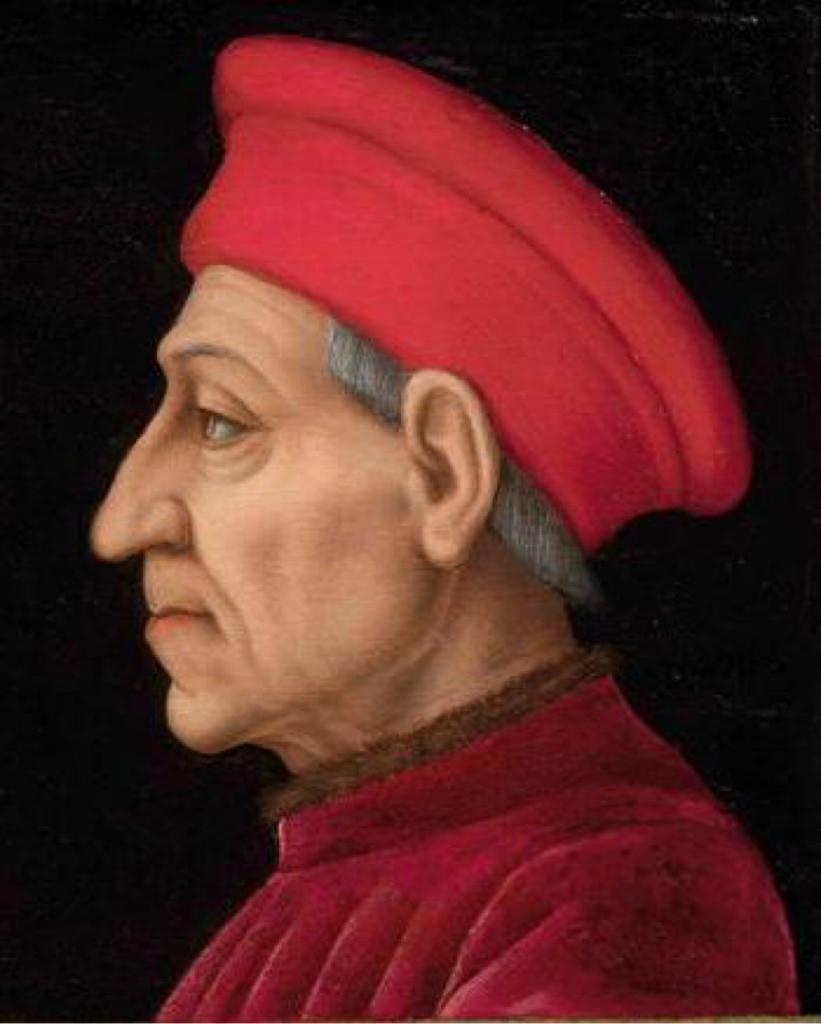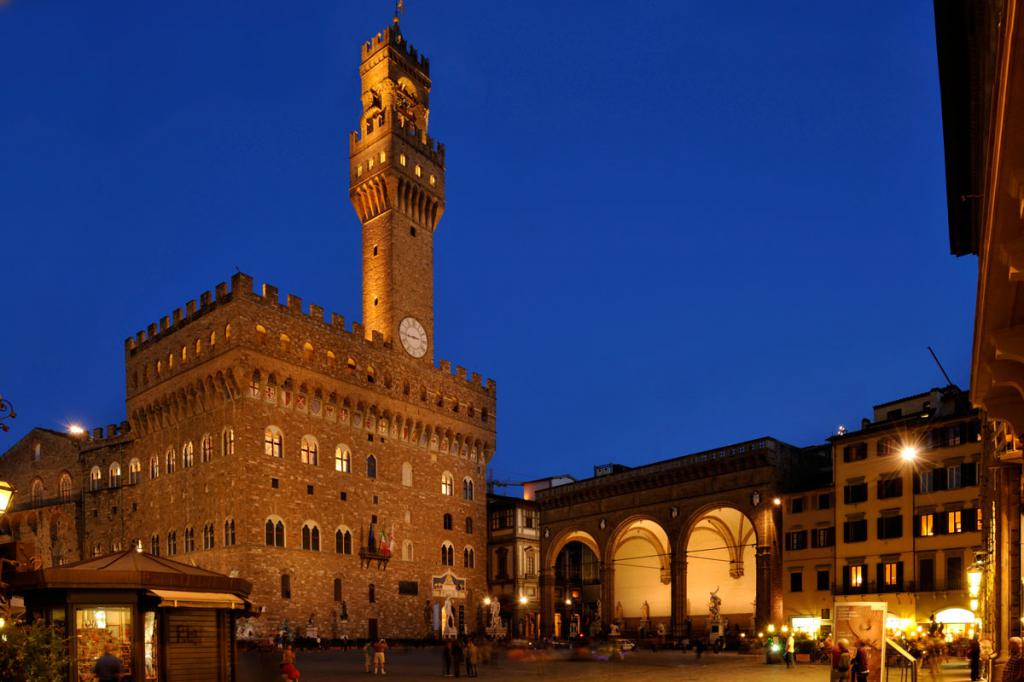Cosimo Medici, a banker, politician and ruler of Florence, went down in history under the nickname Old. The reason is simple: he became the founder of a more viable and ramified branch of the dynasty, whose representatives for six centuries led the life of the Italian city-state. Modest and almost simple for those around him, he managed the life of Florence for many years.
early years
Cosimo Medici was born in 1389. He was the eldest son of Giovanni di Bichchi, a well-known banker throughout Italy. Origin determined the fate of the boy. He studied at the school of the monastery of Santa Maria del Angeli, where he received the education befitting a noble youth, which included foreign languages (Greek, French, Arabic and German), philosophy and mathematics. There he discovered the world of art. In childhood, Cosimo was very close to his younger brother Lorenzo, although it seemed that the rivalry for the right to manage his father’s banking empire should cause estrangement between the brothers.

However, this did not happen. Cosimo in his youth proved himself as a skilled banker and talented entrepreneur. Since 1414, on behalf of his father, he heads the branches of the Medici Bank. Two years he had enough to learn all the intricacies of the family craft. Satisfied father in 1416 entrusted Cosimo with the management of the most important branch located in Rome. Then he married Contessin Bard, descended from the family of Counts Fernio.
Extension of the Medici banking network
After his father retired, Cosimo Medici and his brother began to expand the family business. On their initiative, new branches were opened in Northern Europe, North Africa and the Middle East. The subject of interest of Cosimo and Lorenzo is not only financial transactions, but also trade. The opening of bank branches allowed to establish trade relations. In particular, the Medici were interested in scarce goods in Europe: spices and furs. For a short amount of time, the trading network, the threads of which were in the hands of the Medici brothers, covered almost the whole of Europe, and thanks to the spice trade, it spread to the Far East.
In 1429, Giovanni di Bichchi died. Cosimo and Lorenzo inherited in addition to real estate and bills 180 thousand florins. This state made it possible to redirect part of the activity to politics. At this time, two parties came together in the struggle for top positions in Florence: the aristocratic and the popular (party of popolans). The Medici brothers, after some deliberation, joined the latter.
Failures in politics
Back in 1415, Cosimo Medici was briefly elected a member of the Florentine Signoria - the highest body of city government, so he was not a newcomer to politics. However, in 1430 the situation did not favor him: Florence started a war with the neighboring city of Lucca, on which the party of aristocrats, led by Rinaldo Albizzi, the implacable enemy of the Medici, insisted especially.

To coordinate hostilities, the Committee of Ten was created, which included Cosimo de Medici. This was a major success, but Signoria at that moment was completely controlled by aristocrats. In order to gain a foothold in the authorities, the Albizzi party decided to expel the members of the people's party from the city. The reason was the accusation of Cosimo that he spreads rumors about the theft of public money, allegedly committed by Albizzi. The banker decided to try to make excuses and appeared in the Signoria building, where he was arrested. He had every reason to be afraid of death and therefore refused food. Meanwhile, Albizzi made a proposal to execute Cosimo. Having learned about this, the banker managed to bribe the judges through friends. They managed to escape the execution, but by the decision of the Bali, an extraordinary commission examining the Medici case, Cosimo and his wife and other relatives were expelled from Florence for 10 years.
Failed exile
The banker took the decision of the balia calmly and only asked to give him protection, since many of his enemies gathered on the street. As it turned out, the fears were in vain: the Florentine people all the way Cosimo to the border of the republic showed him signs of respect. The Medici family settled in Padua. From there, Cosimo continued to monitor the political life of his native city and established contacts with representatives of the opposition of the aristocratic party.
In 1434, elections were held in Signoria, according to the results of which nine supporters of Cosimo took places in it. The aristocratic party was seized by panic. Albizzi even proposed to recognize the election results as invalid and not to allow candidates from the party of popolans to be included in the new lists. But most of his supporters did not dare to take such a step. Meanwhile, the new government demanded a trial of Albizzi and his supporters. They tried to raise a rebellion, but it was unsuccessful. The aristocrats were defeated, and Cosimo Medici was able to return to Florence.
Governing body
Cosimo became the first representative of the dynasty to receive full power in the republic. However, he did not annoy the people with the appropriation of magnificent titles. His policy was aimed at reducing the contradictions between different layers of the Florentine population, as well as at establishing peaceful relations with hostile Milan, Naples and Venice.
Imprisonment and exile had no effect on the Medici banking network. She continued to flourish and generate large incomes, which allowed Cosimo not only to decorate his native city and patronize cultural figures, but also to arrange grain distribution in lean years. For this, the Florentine people presented him with the title of "father of the fatherland."
New enemies
The trial of the party of aristocrats is an important fact for the biography of Cosimo Medici. For some time he could not be afraid of an encroachment on his power and take up the dispensation of Florence. However, over time, the situation has changed. Not everyone was happy with the decisions he made, and soon a hostile Medici party was formed, led by Neri Kapponi. He was a talented military leader and enjoyed authority among soldiers. The main complaint against Cosimo was his rude methods of maintaining his power.
For a while, Cosimo was not afraid of Kapponi. But in 1441, he became close with another popular commander, Baldachcho Angiari, whom rumor called the most powerful and undaunted man not only in Florence, but throughout Italy.
To break up such a dangerous coalition, the Medici turned to Angiari's long-standing enemy - Bartolomeo Orlandini. He was offended by Angiari's harsh remarks, and Orlandini's greatest anger was caused by the accusation of cowardice. When Angiari arrived at the Medici Palace to arrange a salary for his soldiers, Orlandini was already waiting for him. The captain was killed, and his body was thrown out of the window.
Establishment of Sole Government
After the death of Angiari, Cosimo Medici could no longer fear the party of Kapponi. He had no rivals on the political field. This allowed the banker to do away with the main principles of the republican system of Florence.
In 1441, a decree was issued according to which representatives of a number of noble families were deprived of the right to occupy places in governing bodies. This order was realized without visible resistance. Already quite old, Cosimo Medici was able to single-handedly control the fate of his native city, placing his supporters in the most significant posts and bribing or completely eliminating those who did not always support him.
Maecenas
Cosimo Medici became famous as a subtle connoisseur of art. Under him, Florence significantly changed its appearance in accordance with the requirements of the Renaissance. To this day, against the background of the beautiful buildings built on his initiative, numerous tourists take photos. Cosimo Medici, in particular, invested in the construction of the Cathedral of Santa Maria del Fiore. Among the secular buildings, the Palazzo Medici is especially significant - the palace in which the Medici family lived.
Particularly close relations with the banker developed with the sculptor Donatello. The great master was famous for his unyielding disposition and even obstinacy, but the Medici could find a common language with him. It was by order of the "father of the fatherland" that Donatello created the statue "David" - the first sculptural image of a naked man from ancient Rome. From this time, Italian culture departs from medieval canons and returns to ancient sources.
Last years and death
The thirty-year rule of Cosimo de Medici ended on August 1, 1464. His last years have not been simple. At first, there was a serious split in the party of fellow soldiers, to eliminate which it was necessary to spend a lot of time and effort, then a crisis was revealed in the family business. Using the turmoil, the opposition tried to achieve the removal of Cosimo from power, but his authority among the people was enough to stop all attempts.
Shortly before his death, the banker entrusted the business to his eldest son, Pietro. In addition to the troubled but still powerful financial empire inherited, the children of Cosimo Medici received great authority from their father and the prospect of taking his place as the untitled ruler of Florence.